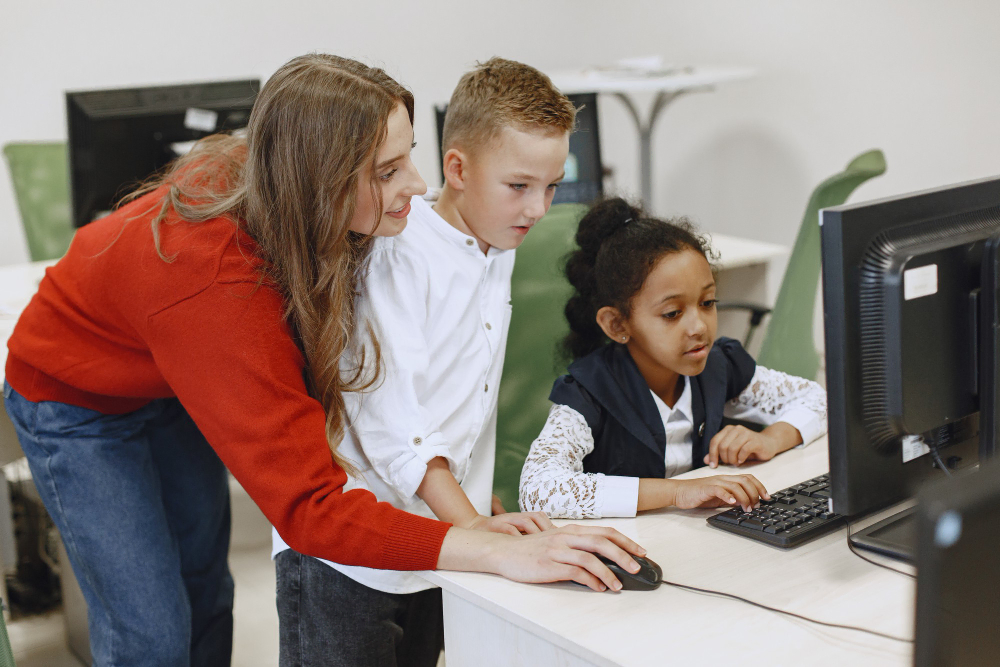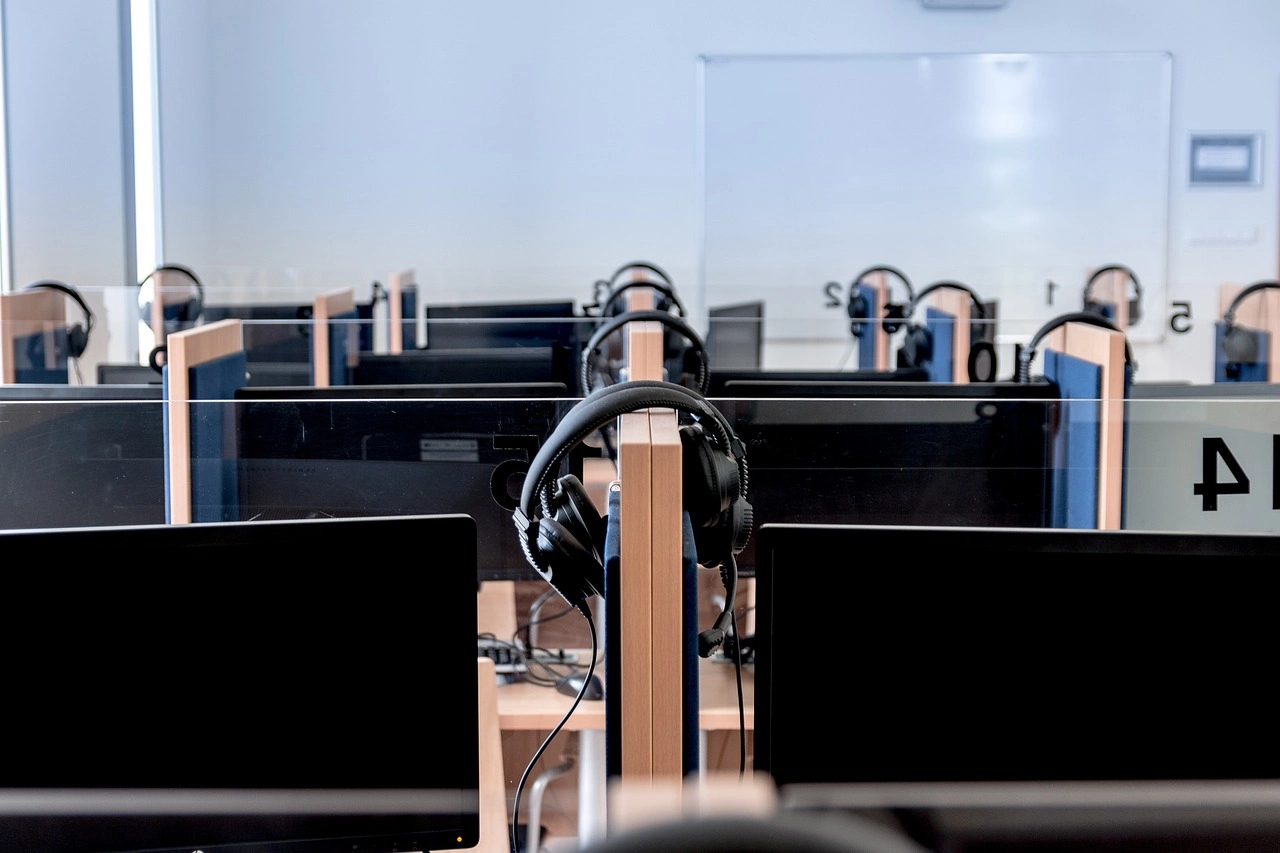The flex model is a type of blended learning that schools, colleges, and other education organizations can use as an alternative to the traditional one. In this model, online learning is the backbone, but learning activities still happen in the classroom.
The Flex Model represents a dynamic approach to online learning, offering students significant control over their learning journey. In this model, students typically work independently on online coursework, with teachers available for in-person support, tutoring, and small group instruction as needed. This structure provides a high degree of flexibility in terms of pace, place, and path, allowing learners to move through material at their own speed and focus on areas where they require the most assistance. It’s a hybrid approach that blends the autonomy of online learning with the crucial element of face-to-face interaction and personalized support.
This adaptable framework offers several compelling advantages. For students who thrive with independent study and require flexible scheduling, the Flex Model can be highly effective, promoting self-direction and time management skills. It can also allow educators to provide targeted support to individual students or small groups based on real-time needs identified through the online platform. However, implementing a successful Flex Model is not without its challenges. It requires students to possess strong self-motivation and digital literacy, and educators must be adept at managing a blended learning environment and providing timely, relevant support to a diverse group of learners working at different stages.
Effectively implementing a Flex Model necessitates robust digital tools that can facilitate independent learning, provide interactive content, and enable seamless communication and support. Creating engaging online modules, interactive assessments, and supportive resources is key to student success in this environment. Tools like ActivePresenter elearning software are designed to empower educators to build such flexible and interactive content, offering features that can help transform static materials into dynamic learning experiences that align perfectly with the principles of the Flex Model.
What is the Flex Model of Blended Learning?
The flex learning model is a form of blended learning that combines online and face-to-face instruction. In this model, students attend a physical classroom but access most of the learning materials through a computer, such as video lectures, online quizzes, and documentaries. The learning time and pace are flexible; students can choose when and how to complete the online activities. Students are also responsible for directing their learning and managing their progress.

The teacher’s role in the flex learning model is to provide support and guidance to the students, rather than delivering the whole lesson content. The teacher is available in the classroom and can assist the students individually or in small groups, depending on their needs and preferences. The teacher can also facilitate group projects and discussions that enhance online learning.
The flex learning model does not depend entirely on the internet connection. Students can access the online resources through the school’s local area network. For example, the online materials can be stored in a central server or the teacher’s computer terminal and shared with the students’ computers. This way, the flex learning model can overcome the challenges of limited internet access and still offer a rich and interactive learning experience.
Benefits of Flex Model
The flex learning model is an approach that can benefit all students. It allows them to work with learning materials at their own pace and level. For example, advanced students can finish the lesson faster and focus on more challenging topics, while struggling students can slow down and ask for teacher assistance. They do not have to worry about keeping up with the class’s pace or feeling left behind.
Another benefit of the flex learning model is that it reduces the educational cost, as it uses less physical resources and infrastructure than a traditional classroom. Most of the content is delivered online, which means less paper, writing utensils, and laboratory equipment are needed. The online materials can also be updated and modified easily, without having to print new textbooks or worksheets.
This model also enables teachers to customize their curriculum and instruction to meet the diverse needs and interests of students. They can choose the online resources that best suit their students’ learning styles and goals, and adjust them according to the students’ feedback and progress. They can also create more interactive and engaging activities, such as group projects and discussions, that enhance online learning.
Besides, this learning model helps improve the teacher-student relationship. Because the teacher can provide more individualized and personalized support and guidance to the students. Instead of lecturing the whole class, the teacher can assist the students individually or in small groups, which is rarely in the traditional classroom. The teacher can also monitor the student’s performance and behavior more closely and intervene when necessary.

Limitations of Flex Model
This model allows students to work at their own pace and level with more flexibility and autonomy in the learning process. However, this model also has some limitations that you have to consider.
One of the limitations of the flex learning model is that it may require more self-regulation and motivation from the students, as they have to manage their own learning and progress. They have to stay focused and disciplined, and avoid distractions. These skills are not easy to develop and maintain, and some students may struggle with them. They may need more guidance and support from the teacher or peers.
Another potential challenge of this model is that it requires a relatively high initial investment. Schools have to set up computer labs and ensure that every student has access to their own computer terminal. Moreover, schools may need to pay for maintenance and upkeep fees annually.

In this approach, the teacher’s role is to provide onsite support when needed. They are responsible for helping students with not only academic but also technical issues. This means that teachers need to prepare and be trained for this role.
Although the flex model can improve the teacher-student relationship, it may reduce the social interaction and collaboration among the students. Since they work independently on their computers and follow their own pace and schedule. They may have fewer opportunities to communicate and cooperate with their peers, and to develop their social and interpersonal skills.
Model in Action
If you are confused about implementing this model in your training program, look at this example. The school will deliver the bulk of the instruction through online learning. Meanwhile, subject-specific teachers provide small-group instruction and facilitate project-based learning to enhance understanding. Students who aren’t making progress on their own have to attend these small-group sessions. Conversely, students who are on track or excelling can join these sessions optionally. Beyond group settings, teachers and tutors provide personalized support on a flexible and as-needed basis. Additionally, students have weekly meetings with a teacher who helps guide their academic choices week-to-week to help them develop control and responsibility over their learning.
So, you’ve learned about the flex learning model, its benefits and limitations. Hope that it can benefit your training program. Don’t forget to follow our Blog and YouTube channel for more useful articles and videos.
See more:
Table of Content: